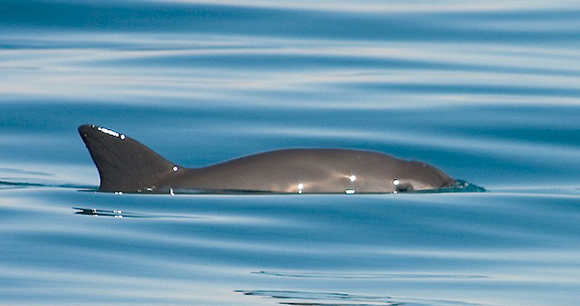
Just like terrestrial animals, the creatures of the sea face myriad threats to their survival, both anthropogenic and natural, and many are in trouble. Our oceans appear vast and teeming with life, and until recently, were routinely viewed as containing infinite resources. In actuality, many marine species are decreasing at an alarming rate and are considered endangered. All manner of marine species are affected, including cetaceans (whales, dolphins, and porpoises), seabirds, sea turtles, sharks and other fish, and marine invertebrates, including entire coral reef ecosystems. The consequences of loss of species in the marine environment are significant, both ecologically and economically.
Given the nature of the marine environment, with its great expanses and depths and tremendous biodiversity (including some species that live in total darkness, relying on chemosynthesis rather than photosynthesis as the basis of life), threats to marine species are varied and often difficult to see, measure, and address. Principal anthropogenic threats to the survival of marine species include pollution and habitat degradation, climate change, ocean acidification, fisheries interactions (e.g. bycatch), hunting and capture by humans, marine noise, and vessel strikes.
AWI focuses its endangered marine species advocacy on various species of small cetaceans, and also addresses threats to large whales, sea turtles, some fish, and deep-sea habitats. For a complete list of endangered species, click here.
Atlantic Humpback Dolphin
The Atlantic humpback dolphin is found only in relatively shallow waters close to shore along the western African coast, ranging through at least 13 countries from Western Sahara south to Angola. As elsewhere for nearshore cetaceans, entanglement in fishing gear is a primary threat. Additional threats include depletion of the dolphins’ prey by fisheries, habitat loss related to coastal development, and anthropogenic noise. In 2024, in response to a petition filed by AWI and allies, the species was listed as endangered under the US Endangered Species Act. Read more.
North Atlantic Right Whale
The North Atlantic right whale is one of the world’s most critically endangered baleen whale species. North Atlantic right whales make their home along the East Coast of the United States and Canada—one of the most industrialized habitats in the world. They are threatened by fishing gear entanglements and collisions with vessels, both of which are exacerbated by habitat disruptions caused by climate change. AWI works to protect these whales by advocating commonsense measures to prevent fishing gear entanglements and vessel strikes. Read more.
Taiwanese White Dolphin
The Taiwanese white dolphin, also known as the Taiwanese Indo-Pacific humpback dolphin (Sousa chinensis taiwanensis)—first described after a 2002 exploratory survey—is found exclusively in the shallow waters of the western coast of Taiwan. These dolphins are 8–9 feet long with a relatively small dorsal fin. Read more.
Vaquitas and Totoabas
Identified 60 years ago, the critically endangered vaquita is endemic to Mexico’s Upper Gulf of California. Reaching a maximum length of about four feet, the porpoise is gray, with dark stripes running from its flippers to the middle of its lower lip. As recently as 30 years ago, there were approximately 600 vaquitas swimming in the Gulf. This number has plummeted in recent years. By 2018, as few as 20 vaquitas remained, and recent surveys appear to show that numbers have fallen even further since then. Read more.